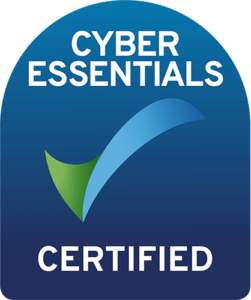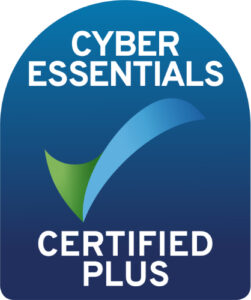Thinc insights
How can SMEs maximise output through IT system integration?
IT systems integration is changing how SMEs think about the tools they rely upon. We’ve found that many are opting for best-in-class systems in areas such as CRM, HR and finance, all integrated with an enterprise resource planning system (ERP) such as Sage 200 or SAP Business One.
This harmonises business processes as SMEs benefit from multiple best-in-class tools, but the tools are no longer siloed; they work in-sync across the entire organisation, all in one place, accessible any time.
In this blog, we’ll take you through what IT system integration is, the challenges that come if an SME doesn’t have integrated systems, its benefits and how it works in practice with some real-life examples of what this may look like.
In short, IT system integration is the process of connecting different software applications, data points and platforms. When your systems are interconnected, data can automatically flow between them, which reduces the need for manual input between systems and ensures consistency across an organisation. Integrated systems can drastically improve operational efficiency, as data is accessible in real-time, and consequently help your people be more productive.
With disconnected systems can come disconnected working. With SMEs that rely on multiple systems that aren’t connected, organisations can experience a number of issues that’ll impact output. Here are some of the key problems caused by disconnected systems:
For SMEs, it’s crucial that operations are efficient, accurate and scalable for growth. Within an SME, resource is often limited, and budgets are tighter, so every opportunity to work with more efficiency should be seized. Many SMEs use multiple software systems for finance, inventory management, CRM and ecommerce and, when these systems aren’t integrated, businesses are more prone to human error and time is wasted.
At Thinc, it’s something we can help with.
“When we are having conversations with our customers, the core focus is growing their business or making sure their business is efficient. Our aim is to identify how we can improve the quality of data within their business and how we can remove repetitive activities so that employees can focus on adding value rather than just managing data.”
Richard Stathers, Operations Director, Thinc
In the SME world, it’s all about staying competitive; by connecting finance, operations, sales and customer management systems, organisations can unlock new levels of productivity, improve their strategic decision-making and deliver a better customer experience. Let’s take a look at the benefits that IT system integration brings to your SME in a bit more detail.
Now that we have covered the challenges of having disconnected systems and the benefits of having them integrated, let’s explore how this works in practice. We asked one of our ERP consultants for an insight into a stage-by-stage breakdown of what’s required. Here’s what a typical IT system integration would look like:
The first stage is all about identifying what systems you want to have integrated, along with which records you’d like to have integrated between systems.
Agree who is responsible for the integration, both internally and externally; assemble a team for the project with representatives of multiple departments included in the integration. Are you going to be building the integration, or working with a third party to help with using things like API?
What tools are used to support the integration of business systems and automation of processes? With our knowledge BPA Platform from Codeless Platforms, we can advise to detail on a whole range of solutions that integrate.
Do your systems have a test environment? Like any development, testing is going to be key to a successful integration. It’ll allow you to spot any potential issues that can be ironed out before go-live.
Ask yourself: what format will the data be transferred across in, such as CSV/SML imports and exports? Do the systems for integration have an Application Programming Interface (API) to allow for the exchange of data? Mapping out what this looks like is vital so that you know which fields in both systems are going to be populated, correctly, by migrated data.
In deciding which system is the ‘master’ source for the record, you’ll decide if the integration should just add records, or perform live updates. Is it going to be a bi-directional integration, having updates to records going in both directions?
Choose your final agreed approach. At Thinc, our typical approach is to store all data in a staging table before processing data into an ERP. This allows us to perform a degree of error validation.
At this stage, bring it back to the project before it launches. It is important to write a clear specification so that all parties involved are clear on what their duties are, with everyone clear on what records and fields are mapped across systems.
Decide who will handle errors. For example, a simple error might be that an invoice has failed to upload into your ERP because the posting period was closed – who is going to resolve tasks like this one? Who should be alerted on malfunctions?
Start to bring everything together during this stage. When performing migration tests, make sure you are not just testing ‘perfect’ data. Try to break the integration by sending incorrect information or missing data so that you can see how your integration is handling errors.
Carefully decide when you are launching the go-live, and that you have enough support in place. Be sure to plan how you are going to get existing data uploaded or reconciled into the systems that you’re integrating. If a full sync of data is required, then make sure you have allowed time for this to process.
At Thinc, we go to great lengths to select a set of tools that we know will bring our clients the best possible results for integration. Through our partnership with Codeless Platforms, our expertise with ERP systems, and our extensive managed services, we can support you with automation and integration to ensure you’re minimising resource strain and maximising output.
Related Topics
Consider integrating your SME’s IT systems with Thinc


Enter your details into the contact form below, and one of our experts will be in touch to arrange a time to speak.
If you’re an existing customer looking for support, please e-mail servicedesk@wearethinc.com, or visit our support page where you can download our remote support apps.